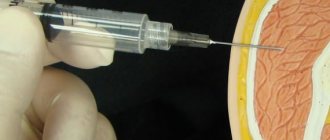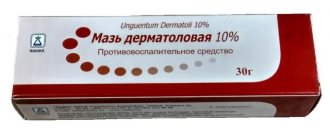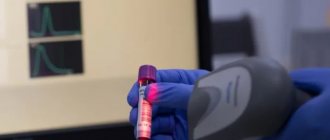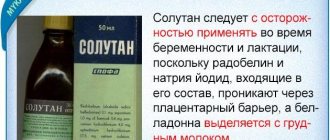Description of the drug
Suprax is a modern cephalosporin antibiotic. Used in the treatment of complex infections caused by gram-negative or gram-positive bacteria, as well as aerobic or anaerobic microorganisms. Shown to be effective against streptococcus and staphylococcus.
Produced in the form of capsules and suspensions. Both dosage forms of Suprax have the antibiotic cefixime as the main active ingredient.
Capsules contain 400 mg of the medicinal component. Excipients include silicon dioxide, azorubine, magnesium stearate, and cellulose. Sold 6 pieces in a cardboard box containing instructions.
Patients aged 6 months to 12 years need to purchase the medicine in powder form to make a suspension themselves. 5 ml of the finished medicine contains 100 mg of cefixime. The cardboard box contains one 60 ml bottle of white or slightly cream-colored powder, instructions for preparing the liquid form and a dosing syringe. The suspension additionally includes: sodium benzoate, xanthan gum, sucrose and flavoring.
Contraindications
What specific contraindications does a drug like Suprax have? There are actually few of them. This medicine should not be prescribed to children who have previously been intolerant to antibiotics belonging to the cephalosporin and penicillin groups. In addition, it is necessary to use the drug very carefully if the baby has chronic concomitant kidney and liver diseases. Children under six months old should not use this antibiotic. Should a child take Suprax before or after meals? More on this below.
When is Suprax prescribed?
This antibiotic is prescribed for:
- Infectious lesions of the ENT organs (sinusitis, inflammatory processes in the pharynx, tonsillitis, frontal sinusitis, otitis media);
- mild infections of the urinary system (inflammation of the bladder or kidneys);
- infections localized in the lower respiratory tract (bronchi, lungs);
- bacterial damage to the skin and soft tissues;
- osteomyelitis;
- Lyme disease;
- endometritis and gonorrhea.
Analogs
When treating bacterial infections of the genitourinary and respiratory systems, as well as ENT organs, the doctor may prescribe another antibiotic with a similar action to Suprax. This could be one of the analogues :
- Cefix;
- Cemidixor;
- Pantsef;
- Ixim;
- Ceforal Solutab.
For treatment, medications with a different prescription and active substance, but with an effect similar to the bacterial flora, can also be prescribed. The selection of a specific drug should be made only by a doctor, taking into account all the health characteristics of the patient.
How to take Suprax
The medicine is taken orally, regardless of meals, with a sufficient amount of water. Adult patients and children over 12 years of age who weigh more than 50 kg are prescribed capsules. Dosage – 400 mg once a day, it is important to take it at the same time. The duration of treatment is from 7 to 10 days, depending on the severity of the condition and the causative agent of the disease.
If the patient is diagnosed with kidney problems, the dose is reduced by ¼.
For uncomplicated gonorrhea, one 400 mg capsule is recommended.
Suprax suspension for children from 6 months to 12 years is prescribed based on the calculation:
- 8 mg of cefixime per 1 kg of child’s weight, given once a day;
- 4 mg of cefixime per 1 kg, but taken twice a day with an interval of 12 hours.
Thus, children are prescribed the following daily volumes of suspension depending on age:
- 6 months-1 year: 2.5-4 ml;
- 2-4 years: 5 ml;
- 5-11 years: 6-10 ml.
Description of Suprax
The main active component of the Suprax prescription is cefixime, a substance belonging to the group of third-generation cephalosporins.
The name Suprax is spelled "Suprax" in Latin. A representative of the cephalosporin group, Suprax, has separate release forms for adults and children :
- powder in the form of granules, which serves as the basis for preparing an infant suspension;
- capsules – for patients 12 years of age and older.
The duration of treatment with Suprax is determined based on the severity of the disease. On average, the course is 5-10 days . Even if the condition alleviates and improvement occurs, treatment cannot be stopped. Otherwise, pathogenic microorganisms may develop resistance to the drug, and in the future it will no longer help.
For your information! Condition for dispensing from the pharmacy: Suprax is dispensed with a prescription. The shelf life of the medicine is indicated on the packaging; it is 3 years from the date of issue.
How to prepare a suspension
To prepare the liquid form of the medicine, you must follow the instructions for the Suprax suspension:
- Shake the bottle to agitate the contents.
- In two stages, add 40 ml of boiled water at room temperature to the powder.
- Shake the contents thoroughly after each addition of water.
- Allow the suspension to stand for at least 5 minutes until the granules are completely dissolved.
The contents of the bottle must be shaken before each use.
Side effects
Unfortunately, there are many more undesirable reactions. They are observed, for example, from the digestive tract. In this case, we are talking about pain in the epigastric region, nausea and vomiting, candidiasis, jaundice, dysbacteriosis, cholestasis, etc. The hematopoietic system in patients reacts with thrombocytopenia, leukopenia, agranulocytosis, bleeding, etc. It is possible, among other things, that headaches along with with tinnitus, renal dysfunction and allergic reactions. In this regard, in parallel with taking the drug, patients are prescribed medications to normalize the vaginal and intestinal flora, as well as antifungal medications.
Is Suprax allowed for pregnant women and children?
During the period of bearing a child, the antibiotic Suprax is prescribed only by a doctor if the benefits of use exceed all possible risks for the development of the fetus. If treatment with the drug is necessary during lactation, breastfeeding should be suspended.
Suprax suspension is actively used in the treatment of children over 6 months of age. Indicated for serious infections, as well as when milder antibiotics are ineffective. Capsules are contraindicated for children under 12 years of age.
Indications
Suprax, which has an effective prescription, is prescribed for the following problems:
- angina;
- pneumonia;
- otitis media;
- bacterial infections of the urinary system;
- bronchitis, etc.
The period of elimination of this antibiotic from the body is quite long, which makes it possible to take the medicine only once a day. In case of serious kidney pathologies, some other diseases or taking medications, the process of removing the active substance from the body may be increased.
Contraindications
Suprax is not prescribed, regardless of its effective prescription, under the following circumstances:
- when breastfeeding;
- intolerance to components;
- while expecting a child;
- children in the first six months of life.
Contraindications and side effects
Suprax is contraindicated in case of individual intolerance to the components and hypersensitivity to penicillin, as well as in infants under 6 months.
With special attention, this antibiotic is used to treat elderly patients, as well as people with renal failure and colitis.
The drug has an impressive list of possible negative manifestations:
- allergic reaction (in the form of urticaria, itching, Quincke's edema, anaphylactic shock);
- disruptions in the gastrointestinal tract (loose stools, constipation, enterocolitis, attacks of nausea and vomiting);
- the appearance of pain in the head, dizziness, ringing in the ears;
- changes in the functioning of the hematopoietic system (decrease in platelets, leukocytes, hemoglobin, bleeding);
- disorders of the kidneys;
- vaginitis
Suprax®
Absorption:
According to the results of studies involving healthy volunteers, after oral administration of cefixime, maximum serum concentrations are usually achieved after 3-4 hours. Following single doses of 50, 100, and 200 mg, mean maximum serum concentrations were 1.02, 1.46, and 2.63 mg/L, respectively, in 12 healthy Caucasians, and 0.69, 1.13, and 1.95 mg/l, respectively, in 12 healthy Japanese subjects.
Children's population:
After single doses of 1.5, 3.0, and 6.0 mg/kg cefixime were administered to Japanese pediatric patients, peak serum concentrations after 3 to 4 hours were 1.14, 2.01, and 3.97 mg/L, respectively.
Distribution:
In human plasma, cefixime is approximately 70% protein bound, with the level of binding independent of concentration in the range of 0.5-30 mg/l. Cefixime is distributed, reaching concentrations in organs/tissues and biological fluids, such as saliva, tonsils, mucous membrane of the maxillary sinuses, middle ear discharge, bile, lung tissue and gall bladder.
Metabolism and excretion:
Biologically active metabolites of cefixime were not detected in the plasma or urine of healthy volunteers after oral administration of the drug. Approximately 20% of a 200 mg dose of cefixime in healthy volunteers is excreted unchanged by the kidneys. The half-life is 2-4 hours.
Kidney failure:
The pharmacokinetics of a single 400 mg oral dose were studied in studies involving patients with varying degrees of renal impairment. Based on the results of studies, half-life, total clearance (CL/F), renal clearance and area under the pharmacokinetic curve (AUC) in patients with severe renal impairment (creatinine clearance < 20 ml/min), patients on hemodialysis or on continuous ambulatory peritoneal dialysis (CAPD) differed from the corresponding indicators of healthy volunteers.
Pharmacokinetic characteristics (mean values) of cefixime in healthy volunteers and patients with varying degrees of severity of renal dysfunction
| Study group | CLCr (ml/mnn/1.73 m2) | Cmax (mg/l) | Tmax (h) | T1/2β (h) | AUC (mgh/l) | CL/F (ml/kg/h) | Renal clearance (ml/kg/h) |
| Healthy Volunteers | 111 | 4,9 | 4,9 | 3,2 | 40 | 141 | 22 |
| Severity of renal dysfunction | |||||||
| Very light | 71 | 5,8 | 4,0 | 4,7 | 57 | 127 | 22 |
| Light | 51 | 7,6 | 4,5 | 7,0 | 90 | 70 | 10 |
| Moderate | 28 | 7,5 | 3,5 | 7,2 | 100 | 80 | 3,7 |
| Heavy | 9,8 | 9,6 | 6,0 | 11,5# | 188# | 41# | 2,1# |
| Hemodialysis | 1,3 | 6,2 | 4,8 | 8,2 | 94 | 73 | 0,4# |
| CAPD | 3,0 | 10,2 | 5,0 | 14,9# | 220# | 42# | 0,5# |
The discrepancy is statistically significant compared to the values of healthy volunteers.
Abbreviations: CLCr - creatinine clearance, Cmax - maximum concentration, Tmax - time to reach maximum concentration, T1/2β - half-life, CL/F - total clearance, CAPD - continuous ambulatory peritoneal dialysis, AUC - area under the pharmacokinetic curve # p < 0 .05 compared to healthy volunteers
special instructions
For patients suffering from diabetes, it is important to take into account the presence of sucrose in the suspension (20 ml contains 15 g). During antibiotic treatment, you must refrain from drinking alcoholic beverages.
If the patient has an allergic reaction to penicillin, then Suprax 400 mg should be taken with caution according to the instructions.
With an overdose of an antibiotic, there is an increase in side effects. In this case, gastric lavage, taking antiallergic drugs, and in severe cases mechanical ventilation and dialysis are indicated.
Description
"Suprax" is an antibiotic with a wide spectrum of action; it is classified as a strong reserve medicine. This means that its use is possible only when less powerful medications are ineffective. Therefore, this antibiotic is never prescribed immediately, because there is a danger that the human body becomes accustomed to potent substances and does not respond to less active and safer analogues. The medication is particularly widely used in the treatment of patients in inpatient settings. How to take Suprax - before or after meals - is described in detail in the instructions.
Instructions for use and dosage for children
How should children take Suprax? The suspension is prescribed to children at the rate of 8 milligrams per kilogram of weight per day. The dose is divided into two doses or taken once. Children aged five to eleven years are prescribed 10 milliliters of suspension. Children from two to four are prescribed 5 ml. And small patients aged six months to two years are usually prescribed up to 4 milliliters per day. The dosage should be reduced in case of renal dysfunction (which directly depends on the creatinine level). The course of therapy is prescribed only by a doctor.







